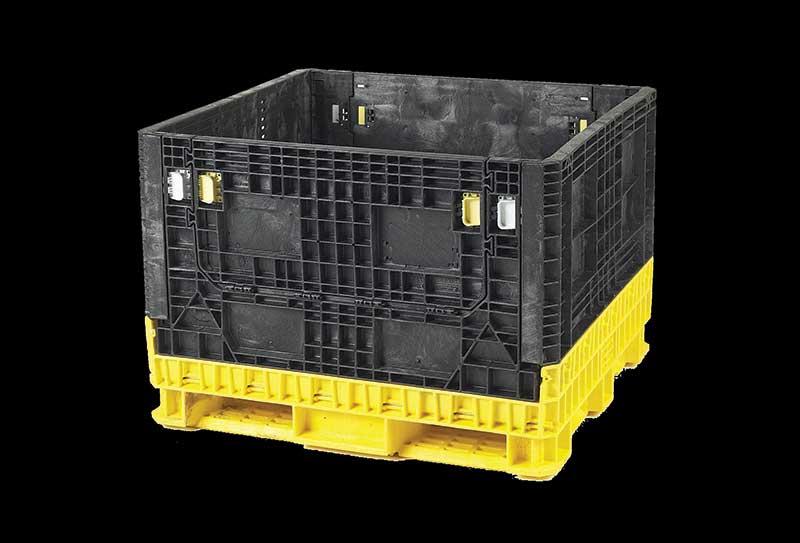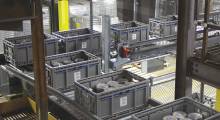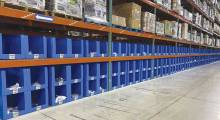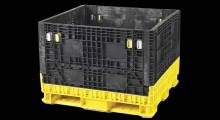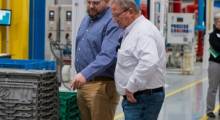When it comes to industrial packaging, bulk bins don’t always top people’s list. Totes and bins (see related story page 38) are more likely to come to mind first. Unless, of course, you’re Chad Mosley, product manager over at ORBIS.
Mosley is quite focused on bulk bins, so we talked to him for a bit the other day.
We started by asking him what’s important when it comes to bulk bins. He cut to it quickly.
“You always want to keep in mind durability, dependability, sustainability and the cube optimization of trailers,” says Mosley.
Clearly, we’re in the rugged packaging lane here. Especially when Mosley continues to say that the most common bulk bin size is 48 x 45 x 34 inches. And then he adds, it’s not uncommon to go up to 65 x 48 inches.
Those are all good-sized bins with a lot of space. They’ve got to be rugged.
Quite a bucket of bolts, you might think. And while heavy metal parts are often transported in bulk bins, their range is quite considerable. Heavy metal parts are a long way from apparel, but both are often transported in bulk bins.
But Mosley’s favorite is automotive parts. These can range from vehicle assemblies to door trim and mirrors. Wiring harnesses are in there as are electric vehicle parts. Lithium-ion battery packs are on the list, too.
Part of the power of bulk bins in automotive is that parts can be loaded into the bins for direct presentation to assembly workers on the line. No need to unload parts and stage them. Instead, unload the bin as part of the assembly process. The bins collapse for their return trip.
All of which is great, but General Motors recently wanted more sustainable bulk bins, explains Mosley. The target was to reduce waste and carbon emissions in its operations.
But how exactly can a bulk bin help with that? That’s the windup, and here’s the pitch.
GM traditionally uses bins made mostly from virgin plastic with little regrind or recycled materials. Changing that mix was the key to more sustainable bulk bins, explains Mosley.
Previously, recycled content was used only in the walls of the bins. “We realized that we could help make a positive impact on the environment by incorporating recycled content into new areas of our containers,” says Joseph Hilliard, supervisor of packaging and data management for GM’s global supply chain.
The solution was to add recycled plastic into the base of each bin. Recycled content now makes up roughly half of the weight of each bin. That’s a doubling of recycled content.
At the same time, the color of the bins changed. Mosley explains that the walls of the bins were black because they had more recycled plastic. The bases were yellow with more virgin materials.
Going forward, the bases will also be black as the amount of recycled plastic increases.
“This is just one step toward promoting a world that is safer, better and more sustainable,” says GM’s Hilliard.
Article topics
